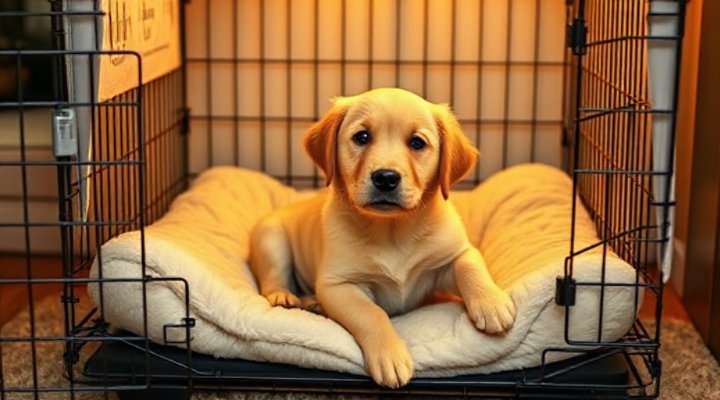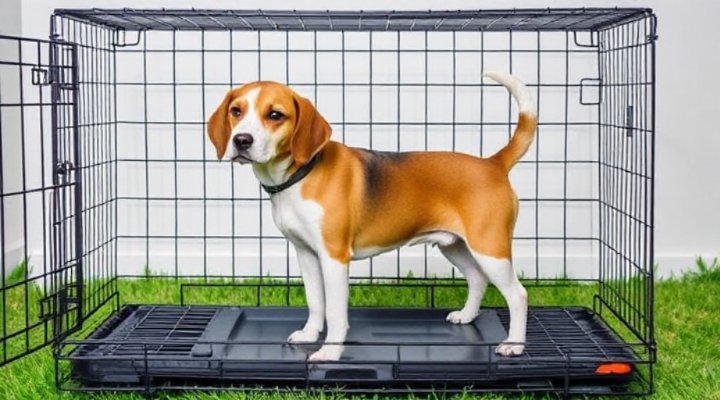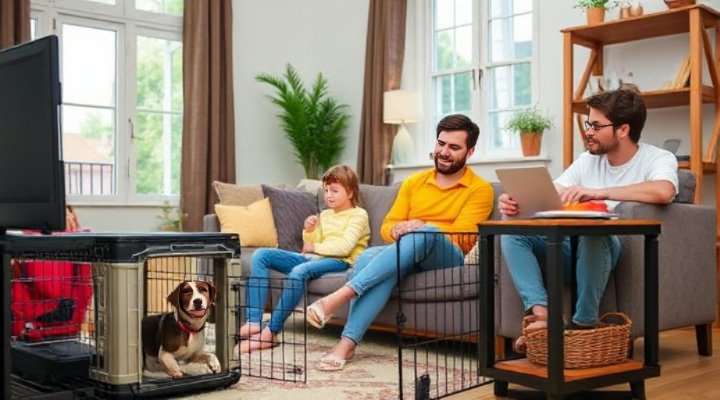If you’ve ever wondered how to make crate training a positive experience for your dog, you’re not alone. Many pet owners struggle with this essential aspect of dog care, but with the right approach, your pup can learn to see their crate as a safe haven rather than a punishment.

Why Crate Training Matters for Your Dog’s Well-being
Crate training serves multiple purposes in your dog’s life. First and foremost, it provides them with a den-like space that satisfies their natural instinct for a safe retreat. According to the American Veterinary Medical Association, proper crate training can significantly reduce anxiety in dogs.
Moreover, crate training is invaluable for:
- House training puppies
- Preventing destructive behavior when unsupervised
- Creating a safe space during travel
- Helping with separation anxiety
Our article on correcting unwanted dog behavior explains how crate training fits into a comprehensive behavior management plan.

Choosing the Perfect Crate for Your Dog
Selecting the right crate is the foundation of successful crate training. The crate should be large enough for your dog to stand up, turn around, and lie down comfortably, but not so large that they can use one end as a bathroom.
Consider these crate types:
- Wire crates: Great for ventilation and visibility
- Plastic crates: Ideal for travel and more den-like
- Soft-sided crates: Best for well-trained dogs
- Furniture-style crates: Blends with home decor
For more guidance, check out our guide on choosing the right dog crate.

Step-by-Step Crate Training Process
1. Introduce the Crate Gradually
Start by placing the crate in a common area with the door open. Toss treats near it, then inside, allowing your dog to explore at their own pace. Never force them inside.
2. Create Positive Associations
Feed meals near the crate, then gradually move the bowl inside. Use special treats or toys that they only get in the crate. This builds positive associations with the space.
3. Practice Short Sessions
Begin with very short periods (5-10 minutes) while you’re home. Gradually increase the time as your dog becomes comfortable.
For a complete training schedule, our 4-week behavior modification program offers detailed guidance.

Common Crate Training Mistakes to Avoid
Even with the best intentions, pet owners often make these crate training errors:
- Using the crate as punishment
- Leaving the dog crated too long
- Not making the crate comfortable enough
- Rushing the training process
- Ignoring signs of distress
Remember, crate training should always be a positive experience. If you’re struggling, our positive reinforcement techniques can help.

Making the Crate a Happy Place
To ensure your dog loves their crate:
- Add comfortable bedding (but remove if your dog chews it)
- Include safe chew toys or puzzle feeders
- Keep the crate in a social area, not isolated
- Use calming pheromone sprays if needed
- Maintain a consistent routine
The ASPCA recommends making the crate part of your dog’s daily routine without overusing it.
Troubleshooting Common Crate Training Challenges
Even with perfect preparation, you might encounter these issues:
Whining or Barking
If your dog vocalizes in the crate, ensure their needs are met (potty, exercise, etc.), then wait for a quiet moment before releasing them. Don’t reward the noise.
Accidents in the Crate
This usually means the crate is too large, the dog was left too long, or needs more potty training. Clean accidents thoroughly with enzymatic cleaner.
Chewing the Crate
Provide appropriate chew toys and consider a more durable crate. This might also indicate separation anxiety needing professional help.
For persistent issues, our scientifically proven behavior solutions offer additional strategies.
Advanced Crate Training Tips
Once your dog is comfortable with basic crate training, try these enhancements:
- Practice crate games to build enthusiasm
- Gradually add duration with you out of sight
- Use the crate for calm time even when you’re home
- Introduce crate cues like ‘kennel up’
- Start associating the crate with travel
Remember, every dog learns at their own pace. What works for one might not work for another. Be patient and consistent.
Final Thoughts on Successful Crate Training
Crate training, when done correctly, provides countless benefits for both dogs and their owners. It’s not about confinement but about creating a safe, comfortable space your dog chooses to use. With these pet crate training tips, you’re well on your way to having a dog that happily goes to their crate on command.
For more dog training resources, explore our best online dog training courses comparison.
Related Keywords: dog crate training guide, how to crate train a puppy, best crate training methods, dog behavior management, positive reinforcement crate training

